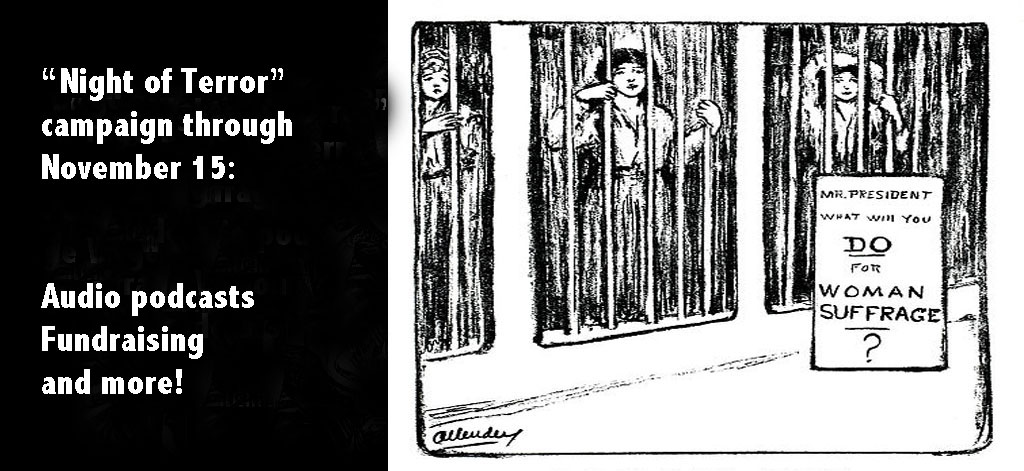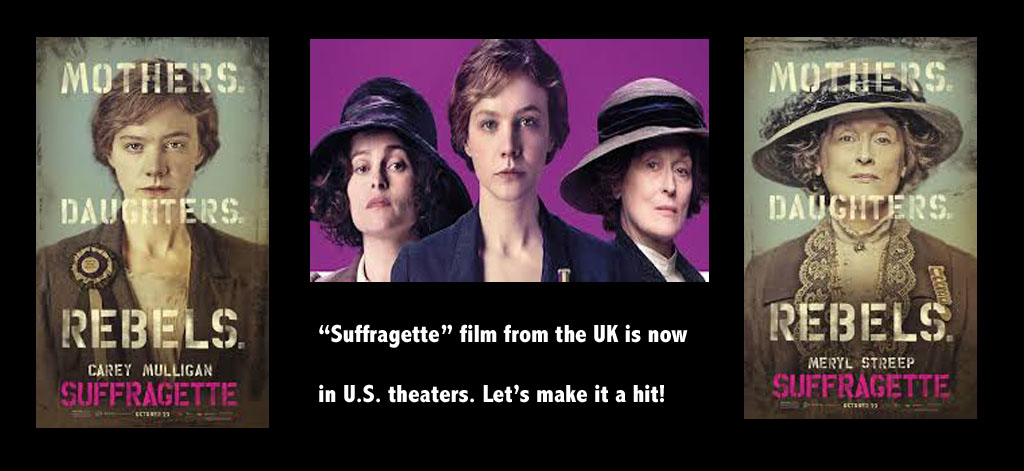by Tara Bloyd
 Seneca Falls Inheritance, by Miriam Grace Monfredo (Berkley Prime Crime; published 1994)
Seneca Falls Inheritance, by Miriam Grace Monfredo (Berkley Prime Crime; published 1994)
For once I’m not reviewing a children’s book – what fun! This light mystery-with-a-side-of-history takes place in Seneca Falls, New York, in 1848, at the start of the women’s rights movement in the United States. Glynis Tryon, the town librarian, is the perfect protagonist to introduce readers to social issues, historical details, and real-life characters (including Elizabeth Cady Stanton and Frederick Douglass). And oh yeah, there’s a few murders thrown in for the fun of it. This wasn’t the absolute best mystery I’ve ever read, but it was quite enjoyable. I definitely recommend reading Seneca Falls Inheritance if you’re looking for a diverting story and gentle introduction to the suffrage movement.
Thirty-year-old Glynis Tryon has chosen to remain unwed, largely because of the many difficulties inherent in marriage in the mid-nineteenth century. Monfredo writes that “The choices were limited: marriage and dependence, or Oberlin College and freedom. There were no confusing alternatives. Women did one or the other. They usually got married. Simple.” Simple though the choice may have been, Glynis doesn’t live without regrets. She just can’t see any other way. Through her observations and experiences we see how little power women had to change circumstances ranging from abuse to alcoholic husbands to poverty. We realize how common – and legal – domestic violence was, and also recognize the existence of racism and other social issues. The frequent death of women from self-induced abortions – more even than from childbirth – and the existence of “no reliable method to avoid pregnancy, no safe way to abort one” is mentioned, as is the controversy about using anesthesia during labor. (Women, after all, are meant to suffer in labor.)
Historical characters mingle with fictional ones throughout the book, giving the book extra verisimilitude and adding interest as well. In a discussion Glynis has with Elizabeth Cady Stanton about a meeting to discuss women’s rights (the meeting that was to become the Seneca Falls Convention), the following conversation takes place:
Elizabeth Stanton sat back against the chair and sighed. “We’ve talked of this before,” she said, “and I know you feel women’s suffrage is the ultimate goal, as I do. But most women I’ve talked with are afraid asking for the vote is an extreme position.”
“I know that without the vote we will forever be asking!” Glynis said. She got to her feet and went to the window. The abolitionists were justifiably questioning why human beings should be enslaved, denied legal rights, because of their color. Why couldn’t it also be asked: should human beings be denied legal rights because of their gender? Weren’t women without those rights also in a sense enslaved? Her opinion of male beneficence was not so high she couldn’t see that.
“In my mind,” Glynis said, returning to her desk, “the vote should be the first and only goal now, otherwise it will take years of pleading and petitioning to achieve the others.[…]”
“But you are one of the few who feel that way,” Elizabeth said, “at least at this time. Which is why it is so important to bring women together. For discussion and planning. And education. Next month,” she went on, “Lucretia Mott – she’s a Quaker minister, you know, an abolitionist and advocate of women’s rights – will be with mutual friends in Waterloo. I hope to see her and suggest the idea of a meeting. With her help, I think we can do it.”
Monfredo makes it clear in this conversation and elsewhere that asking for the vote is a truly radical idea, one which many women oppose because they think it’s simply too audacious. As hard as that is to imagine now, it was reality in 1848. Elizabeth Stanton talks about her husband’s dislike of her interest in women’s rights, as he believes she is abandoning the abolition cause; she angrily discusses the fact that women were instrumental in the early years of the fight for abolition but are being discouraged from taking part in public debate. Glynis thinks to herself “Won’t it be interesting […] when the men who believe women fit only for the drudge work of male campaigns learn those same women have been honing their skills for a battle of their own.”
Besides occasionally considering the tea party that sparked the social revolution, the period before the Convention is generally disregarded; I particularly appreciate that this book encompasses the issues and mindsets during that oft-overlooked timeframe. I also love the many historical details. The description of a dinner eaten at the local fancy hotel is beyond interesting; not only was I driven to learn what the word “kickshaw” meant (a fancy but insubstantial cooked dish), but I also reacquainted myself with the wide variety of dishes served in such a situation: “The roast course arrived: an immense silver platter of carved spring chicken, ham, crisp golden-brown canvasback duck, green goose, and sirloin of beef trimmed with parsley. This was accompanied by mashed potatoes, asparagus, green beans, and parsnips.” Bear in mind that that’s just one part of the meal!
The historical notes in the back of the book are fascinating. I was quite intrigued by the Cult of Single Blessedness. Monfredo writes that “As developed from 1810 through 1860, the main principles of the single blessedess philosophy were to encourage the single life as a socially and personally valuable state, and to inspire the search for eternal happiness through the acceptance of a higher calling than marriage.” Here’s a bit of information about the Cult of Single Blessedness if you, like me, want to learn more.
You may notice that I haven’t discussed the mystery. That’s because, to me, it seemed incidental to the rest of the story. The historical vignettes, the interactions between characters, the buildup to the Convention and description of what happened at it (including the fact that the door to the Methodist church where the Convention was held was locked and Elizabeth Cady Stanton’s nephew had to be lifted through a window so he could open the door from the inside) – all those interested me much more than the whodunit part. That’s not to say that the mystery aspects were poorly written, just that I found them the least compelling part of the book!
Seneca Falls Inheritance is a fun book, a good read, and a gentle introduction to the suffrage movement in the mid-1800s. Like the best novels, it teaches without being didactic and it leaves you wanting more. I look forward to reading the rest of Miriam Grace Monfredo’s works.++
Did you see the video about the Declaration of Sentiments at Seneca Falls? It’s from Suffrage Wagon News Channel.




0 Comments